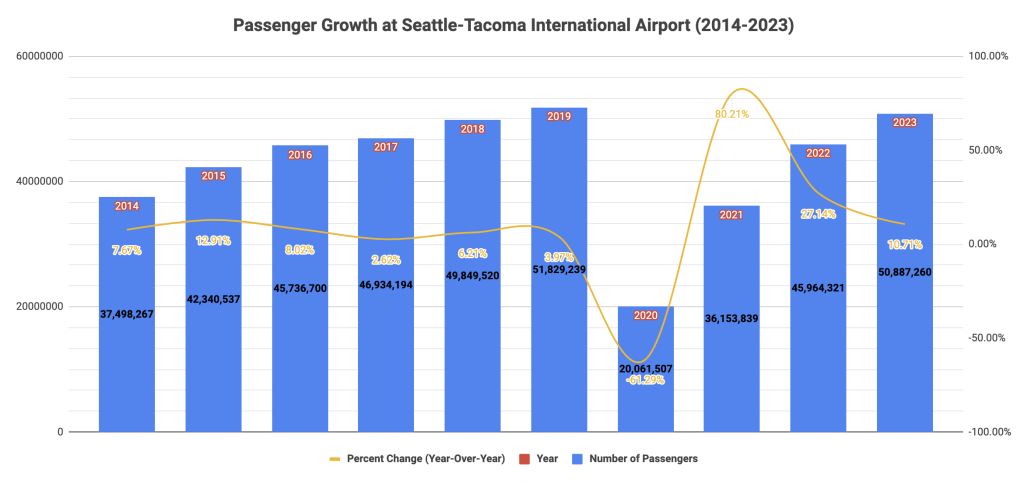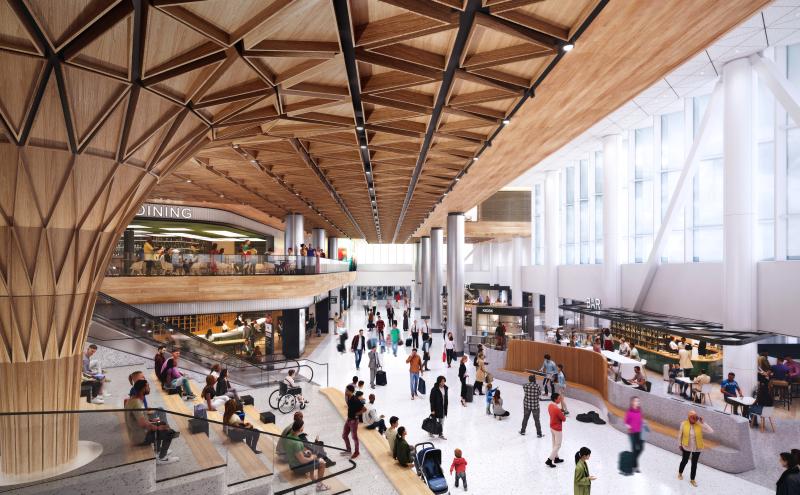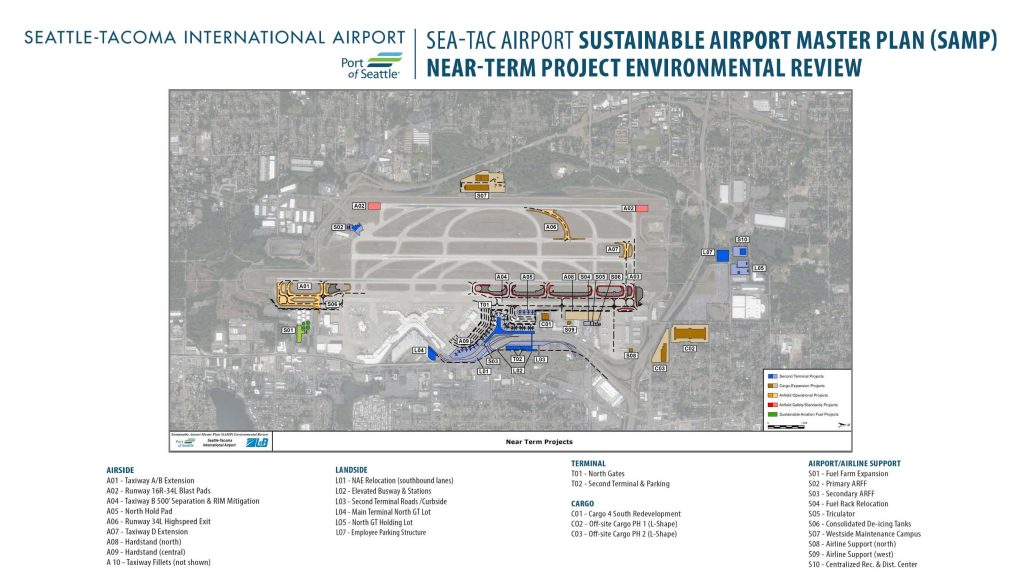Seattle-Tacoma International Airport (SEA) nearly broke its passenger volume record in 2023. Just shy of the 2019 record by 941,979, SEA clocked 50,887,260 passengers in 2023. That was up 10.7% from 2022 when 45,964,321 passengers passed through the airport, as travel rebounds from pandemic lows.
SEA has seen tremendous growth over the past decade. In 2014, about 37.5 million passengers passed through the airport. But as Alaska Airlines, Delta Air Lines, and international air carriers have boosted connections, the airport has seen passenger volumes grow by over one-third. The Port of Seattle estimates that passenger volumes will be up another 3% this year, reaching a new highwater mark close to 52 million passengers and blasting past the 2019 record. That comes as the airport celebrates its 75th anniversary, the dedication of its first main terminal dating to 1949.
Before the pandemic, SEA was averaging about 7% growth each year between 2014 and 2019. Under such a growth rate, SEA might be on course to over 54 million passengers this year, but regional population growth has slowed as did the pace of the passenger rebound last year. On top of this, Boeing 737 MAX quality issues — like the Alaska Airlines Flight 1282 door plug incident — have led to the grounding of planes and mass cancellations, heavily affecting SEA passengers. That could be a short-term countervailing force in passenger volumes due both to passengers flying airlines affected by groundings and wider confidence in aviation.

Nevertheless, the Port of Seattle reports that the airport saw its single biggest passenger volume day in history on July 23, 2023. More than 198,000 passengers passed through airport halls that day. Several monthly passenger volume records were also broken last year: February (3,211,313), September (4,471,360), October (4,364,612), and November (3,976,412).
As for domestic and international traffic statistics, SEA saw international volumes at 101% of 2019 levels — despite Chinese routes still mostly suspended due to federal policy — at 5,787,496 passengers and domestic volumes at 98% of 2019 levels with 45,089,764 passengers. For international traffic, Mexican route passenger traffic was up 91% over 2019 levels and European ones up 21%.
So far this year, SEA isn’t expecting to see many new destinations added to the roster. Except for Lufthansa, airlines will only be providing new connections in their networks:
-
- Alaska Airlines will add service to Toronto–Pearson (competing with Air Canada) on May 16;
- Delta Air Lines will add service to Taipei–Taoyuan (competing with EVA Air) on June 6 and Dallas/Fort Worth (competing with Alaska Airlines, American Airlines, and Southwest Airlines) on July 8;
- Lufthansa will add service to Munich on May 30; and
- Southwest Airlines will resume service to Baltimore (competing with Alaska Airlines) and Nashville (competing with Alaska Airlines) both on June 8 as seasonal routes.

For now, the Port of Seattle is continuing work on a wide spectrum of capital facilities projects to improve passenger experience and expand some aspects of capacity under the “Upgrade SEA” banner. Those include:
- Installation of large bollards for safety and accessibility improvements at curbside pick-up and drop-off drives;
- Checkpoint 1 relocation, expansion, and improvements;
- C Concourse expansion for more passenger dining, retail, and amenity spaces;
- New lounge spaces for Alaska Airlines (at C/D Concourses) and Delta Air Lines and The Club (A Concourse);
- Baggage handling system optimization;
- Planning a massive revamp of the S Concourse for passenger dining, retail, and amenities; and
- Two phases of work to redesign and build out new office, ticketing, and security facilities for Alaska Airlines.

Wider efforts for larger airport expansion are still in the planning process under the Sustainable Airport Master Plan (SAMP) program. Near-term projects identified in the SAMP are proceeding through federal environmental review processes and won’t reach a draft environmental assessment stage until late this year. Delays have meant pushing delivery of SAMP near-term projects back from 2027 to 2032, but, if built, the airport would see 19 new gates and a new north terminal building, additional fueling and cargo handling facilities, and changes to the airport transportation system.
Stephen Fesler
Stephen is a professional urban planner in Puget Sound with a passion for sustainable, livable, and diverse cities. He is especially interested in how policies, regulations, and programs can promote positive outcomes for communities. With stints in great cities like Bellingham and Cork, Stephen currently lives in Seattle. He primarily covers land use and transportation issues and has been with The Urbanist since 2014.
